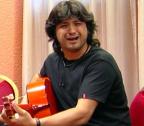Welcome to one of the most active flamenco sites on the Internet. Guests can read most posts but if you want to participate click here to register.
This site is dedicated to the memory of Paco de Lucía, Ron Mitchell, Guy Williams, Linda Elvira, Philip John Lee, Craig Eros, Ben Woods, David Serva and Tom Blackshear who went ahead of us.
We receive 12,200 visitors a month from 200 countries and 1.7 million page impressions a year. To advertise on this site please contact us.
|

|
|
RE: Flamenco Circle of Fifths (RE: Flamenco Keys)
|
You are logged in as Guest
|
|
Users viewing this topic: none
|
|
Login  | |
|

   
aaron peacock
Posts: 141
Joined: Apr. 26 2020
From: Portugal

|
 RE: Flamenco Circle of Fifths (RE: F... (in reply to Ricardo) RE: Flamenco Circle of Fifths (RE: F... (in reply to Ricardo)
|
|
|
I hate to interrupt, as I've enjoyed reading the discussion up until now, and I'm probably in over my head, however.... *(gulp)
All theory notwithstanding, I'm pretty sure that half-tone harmony is up there with octave equivalence in terms of universal non-culturally conditioned ideas. 2 notes a half-step or less apart are dissonant when played together. They beat, audibly
Their combination in a system implies a meta-system and a sub-system, implies motion. Two different stacks that one can oscillate between, possibly in an ostinato form.
If we consider "por medio" and the G-minor and the Bb major, they are a major-minor pair that share notes, notes that the A major doesn't share, until you add that 2b or 9b, borrowed from the stack next door.
It almost doesn't matter which scalar step you want to play a "chord" over, it's merely about which notes are involved and which stack they belong too.
Chromatic neighbors are as far apart as musically possible, forget dominant function, we go next door and it's Timbuktu.
Voice leading teaches us about half-step resolution, but when that leading voice carries over into the next chord, we are in new territory.
If you think of whole-tone series there's 2 of them. If you think of diminished chords there's inversions of the same 4 up and down the neck.
Superimposing more limited systems on larger systems is it's own funny game.
total tangent here:
Sometimes we get complicated and try to put Bela Bartok into intellectual territory when the acoustic scale is actually a reflection of the real-life physical harmonic series.
Anyone here play valved brass instruments? It's quite a trip to compare where in the harmonic series each system is in relation to the others. There are multiple valve combinations to achieve the same note, some closer than others, but we use our embouchure to achieve notes, like singing.
I used to play F-horn, and half of this playing is fudging, singing along with the sheet music, the notes are so close together that high up the harmonic series with 10m of tube nearly, you can use your hand in the bell to fudge the rest.
Sure, the way brass was written even with trumpet (wide gaps, short tube) entirely possible to play pieces written up until Wagner with no valves, just fudging it...with F-horn you can take such primitive practices into 20th century music!
total non-sequitur here... sorry :D
Anyway, I see the inclusion of both 3rds, and of the 2b/9b as implying movement and a metascale, not a literal invitation to just pile everything into all voicings always... it's modal, 2 different F chord voicings in a soléa are different, as the base is common but the differences are what matters.
see, my trancey button pushing wasn't completely useless, lol.
this entire thing should be thought of texturally.
I also agree with Beni2 that open-string accidents account for a lot. seeing as how the guitar is one principle pillar of this culture. I may just be paraphrasing/stealing without attribution, as he also proposed a meta-scale and the usage of sub-scales of it in a modal fashion. (maybe i added the last part: i see 2 modes intertwined that one moves between. 2 stacks)
I'd like to echo what I understood as El Burdo's expressed sentiment that if it sounds too complicated, it probably is.
If you hear some confounding note borrowing, it's possibly an artifact... maybe the accompaniment was not completely following the vocal melody, maybe the player liked a certain chord voicing, maybe they are just moving the same shape around like a rock player sliding power chords (often in bulerias) for emotional effect like "here we go nuts"
Ramon Montoya was a cattle trader who bought his first guitar around age 18. Whatever feverish practice regime the flamencos have that enabled them to often be virtuoso-level players is not about music-theoretical underpinnings. There's a simple system at play here.
If you ask around, traditionally (until lately) there's not much explanation, you learn by jumping in and doing. They give you the gist "it's a marcha in Sol Re with some Do" 1-2-3 go.
You pick up on certain musical oddities as "essential flavor" or "attitude" like youths pick up on blues-guitar bends, intuitively, by example.
If you know what a music is supposed to sound like, you can try to achieve that.
ok, I'll hand the mic back to the educated folks.
what was that quote about "talking about music is like dancing about poetry" when Sr. Martins has the point here, let's hear it :D
_____________________________
List of Arts Where Experimentation is Dangerous:
1) Sword-Combat
2) Aerial Acrobatics
|
|
|
|
REPORT THIS POST AS INAPPROPRIATE |
Date Feb. 11 2021 12:43:55
 |
|

   
Ricardo
Posts: 14801
Joined: Dec. 14 2004
From: Washington DC

|
 RE: Flamenco Circle of Fifths (RE: F... (in reply to aaron peacock) RE: Flamenco Circle of Fifths (RE: F... (in reply to aaron peacock)
|
|
|
quote:
a meta-scale and the usage of sub-scales of it in a modal fashion
I get that, and it is used often as a description. But the idea of that would be to stick to the darn meta scale and not change it. That includes chords and incidental chromatics. But when you look back then at basic Tonal music in a major key, the “meta scale” is the full chromatic. More often, if you want to think “simple function”, the “away chord” and the “Home” chord, well, the music will utilize all the fun meta notes during the “away” chord moments. That is why we have cadences. In minor key, that is why we change scales deliberately. In fact if you decide to do only certain notes for some modal chord and certain other notes for the next chord, rather than a collective share of the meta scale regardless which chord, then you are probably NOT doing modes but some sort of tension and release like cadences offer. Ionian mode is the unique mode that offers the traditional cadence without a fancy scale alteration, so it stands as the basis of tonality. Minor key is different, and flamenco is like minor but still different. The cadence is the huge part of flamenco, we call it “remate” and if you don’t let the music do that, even at least rhythmically, then sure, you end up with meta scale fakemenco, which would actually be the better concept or example of modal music. And there are plenty of example of that sort of thing starting with Miles Davis “Flamenco Sketches” on through ottmar leibert. Steering students AWAY from the dark path of fakemenco might just start at the cross roads of modality and tonality as concepts.
_____________________________
CD's and transcriptions available here:
www.ricardomarlow.com
|
|
|
|
REPORT THIS POST AS INAPPROPRIATE |
Date Feb. 11 2021 14:03:02
 |
|
 New Messages New Messages |
 No New Messages No New Messages |
 Hot Topic w/ New Messages Hot Topic w/ New Messages |
 Hot Topic w/o New Messages Hot Topic w/o New Messages |
 Locked w/ New Messages Locked w/ New Messages |
 Locked w/o New Messages Locked w/o New Messages |
|
 Post New Thread
Post New Thread
 Reply to Message
Reply to Message
 Post New Poll
Post New Poll
 Submit Vote
Submit Vote
 Delete My Own Post
Delete My Own Post
 Delete My Own Thread
Delete My Own Thread
 Rate Posts
Rate Posts
|
|
|
Forum Software powered by ASP Playground Advanced Edition 2.0.5
Copyright © 2000 - 2003 ASPPlayground.NET |
0.0625 secs.
|


 Printable Version
Printable Version







 New Messages
New Messages No New Messages
No New Messages Hot Topic w/ New Messages
Hot Topic w/ New Messages Hot Topic w/o New Messages
Hot Topic w/o New Messages Locked w/ New Messages
Locked w/ New Messages Locked w/o New Messages
Locked w/o New Messages Post New Thread
Post New Thread